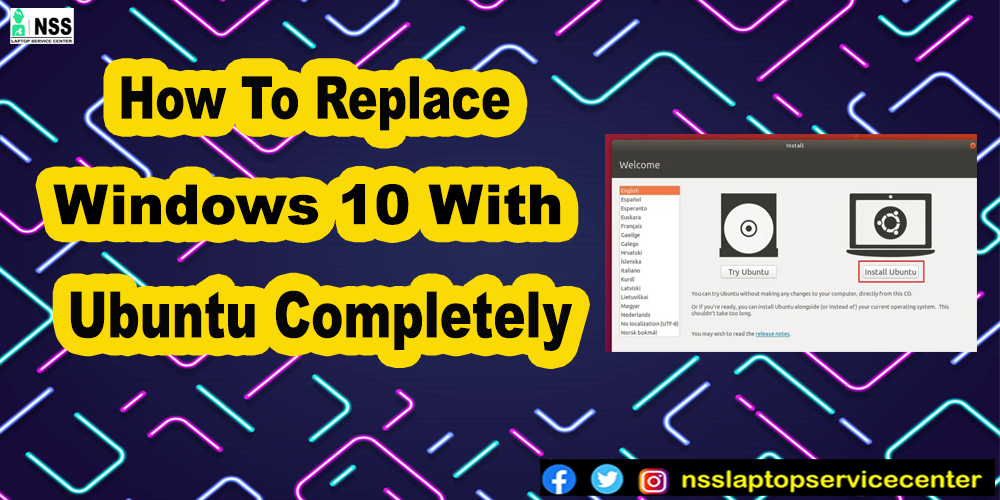
What is Ubuntu?
Ubuntu is a Debian-based Linux distribution primarily of free and open-source software. The three official editions of Ubuntu are Desktop, Server, and Core for robotics and Internet of Things gadgets. You can use a virtual machine or the PC alone to execute editions. With support for OpenStack, Ubuntu is a well-liked operating system for cloud computing. Since version 17.10, GNOME has been the default desktop in Ubuntu.
Features of Ubuntu
LibreOffice, Firefox, Thunderbird, Transmission, and various lightweight games like Sudoku and Mines are all part of the standard Ubuntu installation. The built-in Ubuntu Software (formerly known as Ubuntu Software Center) and other APT-based package management tools provide access to many extra software packages.
The primary tool and any other APT-based package management tool can still access and install a large number of additional software packages that are no longer installed by default, including Evolution, GIMP, Pidgin, and Synaptic. Additionally, cross-distribution snap packages and flatpacks allow the installation of software, including certain Microsoft products, on most of the major Linux operating systems (such as any currently supported Ubuntu version)).
Uses of Ubuntu:-
Ubuntu is a Linux distribution that is open-source and based on Debian. Ubuntu, which Canonical Ltd. supports, is a decent distribution for novices. Although it may be used on servers, the operating system was designed primarily for personal computers (PCs).
-
Free of charge. Ubuntu is available for free download and takes a short time to install.
-
Privacy. Ubuntu offers a more secure and private solution when compared to Windows.
-
Working with Hard Drive Partitions
-
Free Apps.
-
User-Friendly.
-
Accessibility.
-
Residence Automation.
-
Performs as an Antivirus
Prerequisites:-
To install Linux alongside Windows conveniently and securely, you'll need the following:
-
A computer with Windows 10 pre-installed.
-
A blank USB key (pen drive, USB drive)must be at least 4 GB.
-
Internet access (downloading Ubuntu ISO images and live USB creation tools). This can be done on any system, not only the one that is dual booting.
-
An external USB disc is optional. Use it to back up your current data.
-
This is Optional: bootable drive or Windows recovery (if you encounter any major boot issues, they could be fixed).
How to replace Windows 10 with Ubuntu completely step-by-step explanation:-
Step 1: Create a backup of your Windows system (optional).
A backup of your data is usually a good idea in case you screw up the system when dealing with the disc partitions.
Step 2:- Download Ubuntu of your choice, whichever Linux distribution you use.
Step 3:- Make an Ubuntu live USB or DVD.
Step 4: Clear some space on your hard drive to install Ubuntu.
Step 5:- Launch Ubuntu from a live USB.
Step 6:-Installing Ubuntu alongside Windows 10
The installation process should begin.
The initial steps are straightforward. Language and keyboard layout are your choices.
|
Note: Any machine can be used to install Ubuntu and to create the live Ubuntu USB process. However, the following steps are handled by the system you are dual-booting. |
Conclusion:
I won't say much, as the blog has informed you about how to replace Windows 10 completely with Ubuntu. It is an easy process, and you can use it for various purposes.
Frequently Asked Questions
Popular Services
- MacBook Battery Replacement Cost
- HP Printer Repair in Delhi NCR
- Dell Laptop Repair
- HP Laptop Repair
- Samsung Laptop Repair
- Lenovo Laptop Repair
- MacBook Repair
- Acer Laptop Repair
- Sony Vaio Laptop Repair
- Microsoft Surface Repair
- Asus Laptop Repair
- MSI Laptop Repair
- Fujitsu Laptop Repair
- Toshiba Laptop Repair
- HP Printer Repair Pune
- Microsoft Surface Battery Replacement
- Microsoft Surface Screen Replacement




